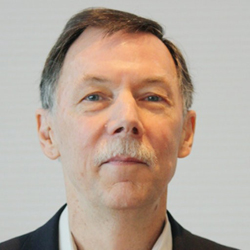 Kenneth W. Campbell was recognized for his 50 years of research and practice-oriented contributions to earthquake hazard and risk characterization and his innovative and impactful utilization of earthquake ground motion data. He has been a leader at several professional organizations, including CoreLogic Inc. and EQE International/EQECAT, focused on seismic hazard and risk analysis used in the insurance industry. His career also includes work for the U.S. Geological Survey and consulting companies specializing in developing design ground motion for worldwide critical facilities and oil platforms.
Kenneth W. Campbell was recognized for his 50 years of research and practice-oriented contributions to earthquake hazard and risk characterization and his innovative and impactful utilization of earthquake ground motion data. He has been a leader at several professional organizations, including CoreLogic Inc. and EQE International/EQECAT, focused on seismic hazard and risk analysis used in the insurance industry. His career also includes work for the U.S. Geological Survey and consulting companies specializing in developing design ground motion for worldwide critical facilities and oil platforms.
He is perhaps best well-known for his impactful studies in ground motion modeling, several of which were cited by his peers in their nomination of Campbell for the Bolt Medal. These groundbreaking papers include the 1981 Bulletin of the Seismological Society of America paper “Near-Source Attenuation of Peak Horizontal Acceleration,” which introduced the concept of magnitude saturation of peak ground acceleration; and the 2003 BSSA paper “Prediction of Strong Ground Motion Using the Hybrid Empirical Method and Its Use in the Development of Ground-Motion (Attenuation) Relations in Eastern North America,” which pioneered the concept of the “hybrid-empirical method” for developing ground motion models in regions with sparse ground-motion recordings.
Starting in 2003, Campbell participated in the Next Generation Attenuation (NGA) project series NGA-West, NGA-West2, NGA-East and NGA-Subduction, providing supporting studies for ground motion model development. These models have been adopted by the U.S. Geological Survey for the development of the USGS National Seismic Hazard maps, which inform seismic design codes across the country.
Campbell has also worked as a consultant on high-profile infrastructure projects in the U.S. and internationally, including the seismic hazard analysis of the California High-Speed Rail project and multiple levels of the Senior Seismic Hazard Analysis Committee (SSHAC) projects for the U.S. Nuclear Regulatory Commission. He has also served as a seismic hazard expert for the International Atomic Energy Agency.
